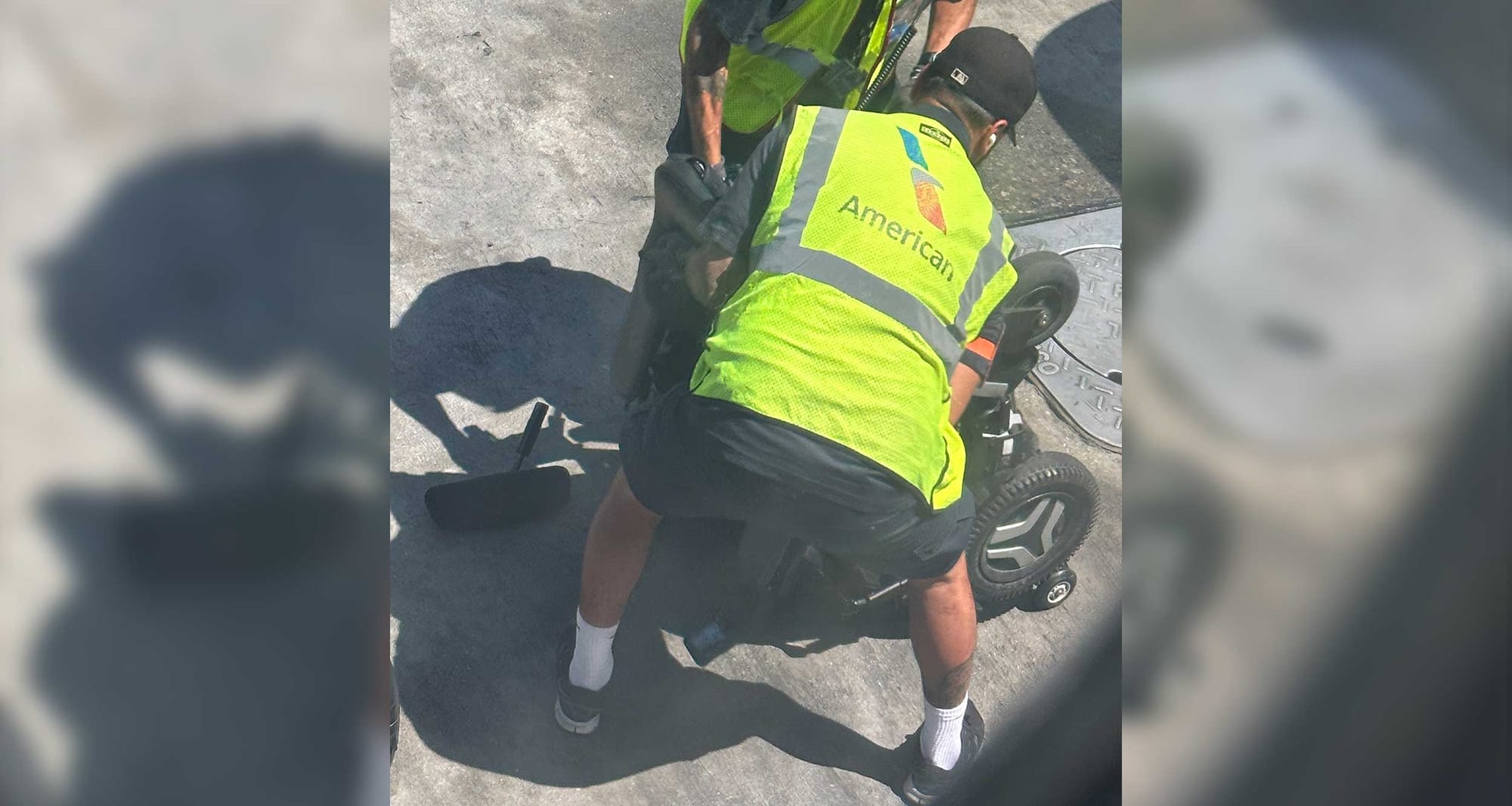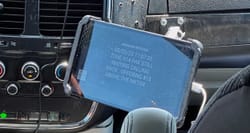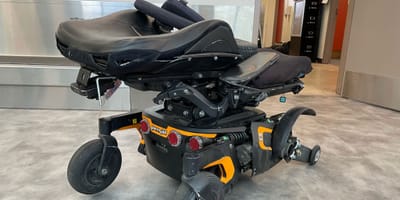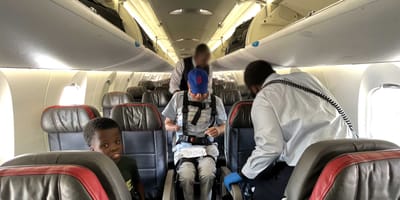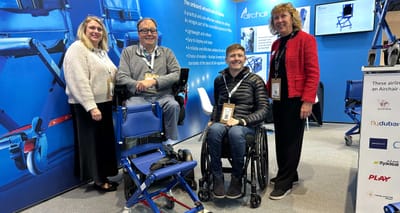Data published in the U.S. Department of Transportation’s monthly Air Travel Consumer Report reveals the frequency of wheelchair damage on major airlines — reported damage, that is. In the latest ATCR for the April 2023 reporting period, the frequency of reported wheelchair damage was just 1.35% — a high rate that should not be discounted as acceptable or characterized as infrequent. It’s a deeply problematic statistic, but it does not tell the full story.
Airlines damage wheelchairs much more frequently than reported in federal data
I have previously argued that wheelchair damage may actually occur up to 50% of the time — a claim that is based on data from my own travels as a power wheelchair user and includes data points from more than 1,000 flights. My estimate that up to 50% of wheelchairs are damaged by airlines suggests significant underreporting.
Most unreported damage is cosmetic, minor and may not be immediately noticed by the passenger. If a wheelchair is returned with minor damage — scratches, torn fabric, cuts or scrapes — most wheelchair users surveyed by WheelchairTravel.org say they would not go through the trouble of reporting it. Oftentimes, I leave minor damage unreported — a scratch in my plastic fender isn’t going to impact the usability of my chair. In those instances and despite the fact that damage did actually occur, it will not be included in the DOT statistics unless a formal damage claim is filed at the airline’s baggage service office.
Don’t expect an airline to tell you that they damaged your wheelchair
There is another reason that wheelchair damage might go unreported — it is a reason that I have long suspected to be true, but have been unable to prove definitively. That is, when airlines damage a wheelchair but do not inform the passenger that an incident ever occurred.
Airlines have a responsibility to inform passengers if their wheelchair has been mishandled.
When one of my wheelchairs was destroyed during loading at my (former) home airport in July 2022, the manager on duty boarded the plane to inform me about the incident. He was profusely apologetic and asked me, given the circumstances, what I needed. In the blog post American Airlines Destroyed My Wheelchair — Here’s Why I’m Not Upset, I noted the following:
I knew, from the moment I was informed of my wheelchair’s untimely demise, that it was a true accident. An honest mistake by good people whom I trust.
After I had disembarked from the aircraft, the captain met me in the jet bridge to offer a sincere apology. I reassured him that I was in good hands, defended the AA team who I know so well, and assured him that I was not upset. “Accidents happen,” I said, as I shrugged my shoulders.
But that’s not how it is everywhere. Some ramp agents (many, I suspect), are not as honest as those in Gainesville, Florida. I’ve long suspected that many incidents of wheelchair damage are not reported internally (or to the passenger) and that those responsible rarely own up to their mistakes. But I had no smoking gun. That is, until last weekend.
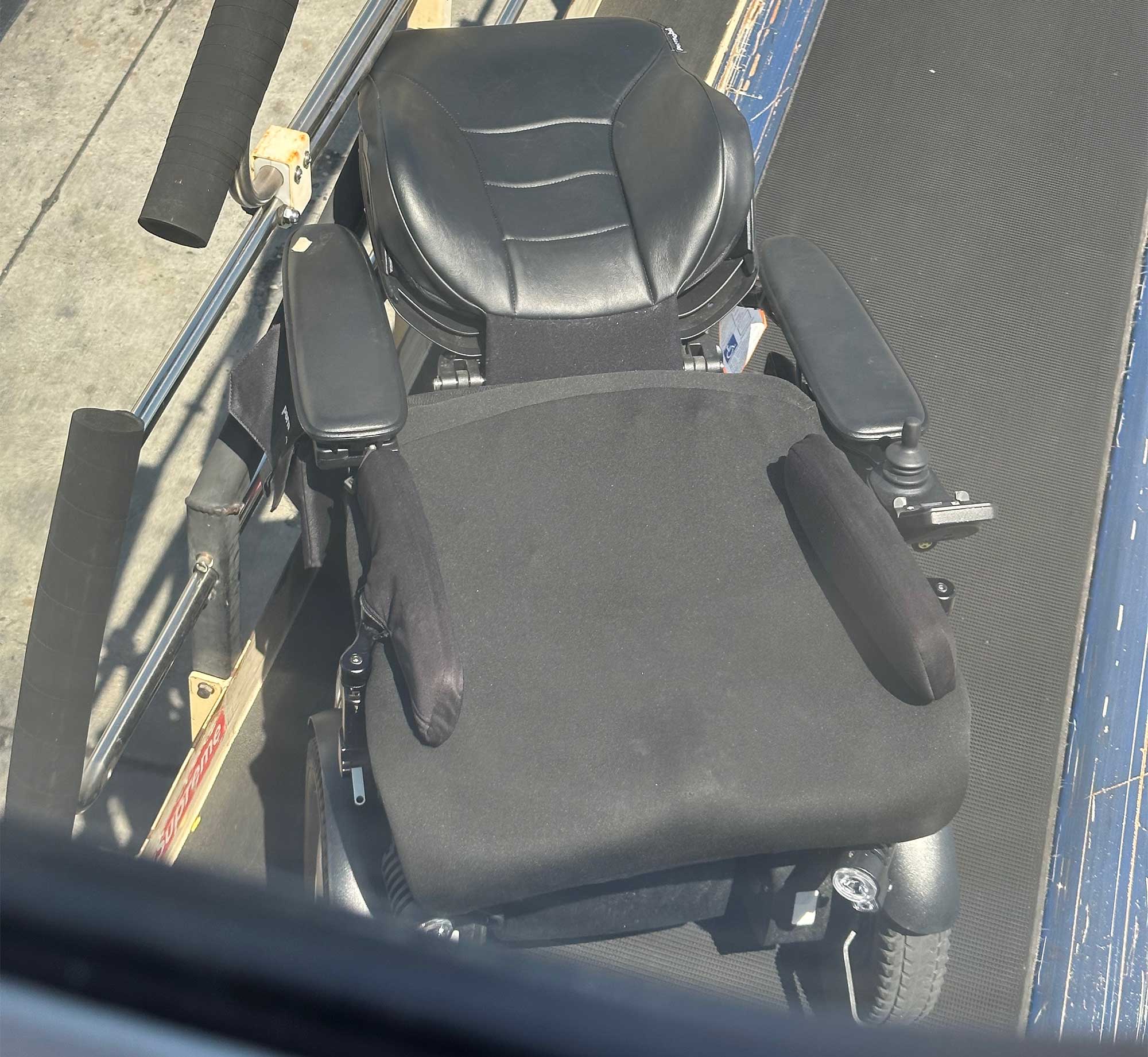
Peering through the window at my seat, 3F, on American Airlines flight AA1889, Boeing 737-800 service from Las Vegas, Nevada to Los Angeles, California, I watched as a team of ramp agents (mis)handled my Permobil F3 power wheelchair. With my first look at the wheelchair’s position on the belt loader, I knew that something bad was likely to happen. The backrest was wedged beneath the loader’s railing and it was turned askew.
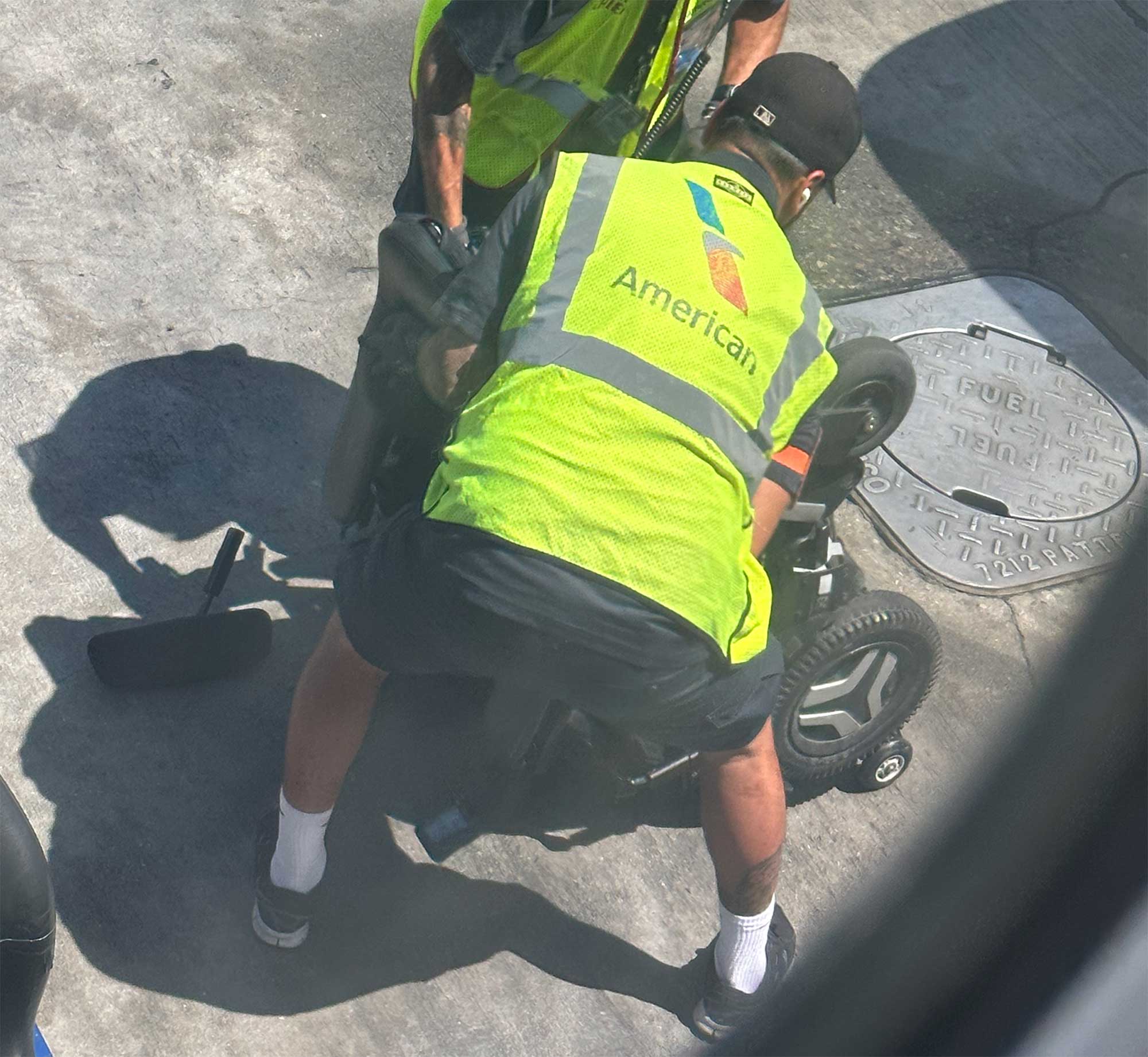
Seconds later, I watched as an agent activated the belt and, before I could even pick up my phone, the chair tumbled off the side and onto the ground. The wheelchair turned upside down as it fell towards the asphalt and bounced before resting with the rear casters sticking straight up in the air.
Assistance staff arrived shortly thereafter to remove me from the aircraft — I requested my wheelchair to be delivered as close as possible to the door of the airplane, but the contractors were unable to bring it to me. I had to retrieve it in the gate area, as large numbers of passengers crowded to board the jet that I had just deplaned. My wheelchair was clearly damaged — bent thigh supports, a torn seat cushion, bent/broken bag hooks, a bent caster wheel — and preexisting damage (caused by American Airlines) made worse including bent/broken headlights, a torn backrest cushion, bent seat frame, and a mangled backrest.
That’s the surface damage. Some of it, travelers might ignore or, worse, not spot until days later. Even I hadn’t noticed the torn seat cushion (with foam spilling out) until I made it to the baggage office!
My primary concern wasn’t cosmetic, though — it was and continues to be structural. The wheelchair now groans under my weight, it wobbles and fails to hold a straight line during operation and, clearly after such a violent fall, its structural frame has sustained some degree of damage. I’m not an engineer and can only report on the wheelchair’s symptoms, but it looks and feels nothing like the brand-new wheelchair that it was less than a year ago.
In the gate area, no one from the baggage team was waiting to tell me about my damaged wheelchair. I asked to speak with a complaint resolution official (learn more about what a CRO is and what they are supposed to do here) and asked her, “Is there anything that you need to tell me?” She had no idea what I was asking about, and confirmed with the gate agents that no one had told them about my wheelchair being dropped. No one knew anything, and no one was ever going to tell me that something horrible had happened — luckily, I had seen it with my own eyes.
American Airlines and its contractor, Global Repair Group, aren’t properly equipped to respond to wheelchair damage
American Airlines and a number of other carriers, including Alaska Airlines and JetBlue, outsource damaged wheelchair claims to a third-party, Global Repair Group. The company has long been a thorn in my side, and became so difficult for my local repair shop to deal with that I was told to go elsewhere for airline damage repairs. “We’re not willing to work with GRG anymore,” I was told. Competitor Scootaround, which has managed repairs for Delta Air Lines and other carriers, presents similar challenges to those at GRG, but has a positive relationship with that same local wheelchair repair shop.
My wheelchair was damaged shortly before noon two Saturdays ago in Los Angeles. I asked Global Repair Group to arrange a loaner wheelchair for me that day, either in Los Angeles or San Francisco, where I was traveling that night. The company was unable to source an electric wheelchair of any kind, and also failed to secure a loaner on Sunday.
That’s simply unacceptable. Has the company driven away so many local repair shops and rental equipment suppliers that they’re unable to find a single wheelchair in two of the largest cities in America?
If my wheelchair had not turned on (and it’s miraculous that it did), the airline’s inability to source a loaner wheelchair would have left me sitting on the floor at baggage claim in Los Angeles — for at least two days!
The wheelchair AA damaged (again) has been awaiting repairs since March.
As I shared on Twitter in June, American Airlines badly damaged my wheelchair in March. It took a month for a repair technician to pick it up, and they kept it for more than a month. When it was returned to me in June, few of the repairs had been completed and I was once again told to take a place in line.
Now, more than two months after that June tweet, my chair is still undergoing repairs and, given what the airline did to it in Los Angeles, there may be no point in even attempting a repair — there are surely few parts that do not need to be replaced.
American Airlines and GRG have overseen this process since March, and it’s fair to hold their mismanagement under the microscope. I’ll do a deeper dive into the business of airline wheelchair damage claims in a future article.
Final Thoughts
My experience in Los Angeles, and the failure of American Airlines to disclose an incidence of potentially significant wheelchair damage, is a reminder that disabled travelers must keep a close eye on their mobility equipment. Travelers should perform a close inspection after each flight, take before/after photographs and, in the interest of our larger community of disabled travelers, join me in making a commitment to report all future wheelchair damage, no matter how minor.

